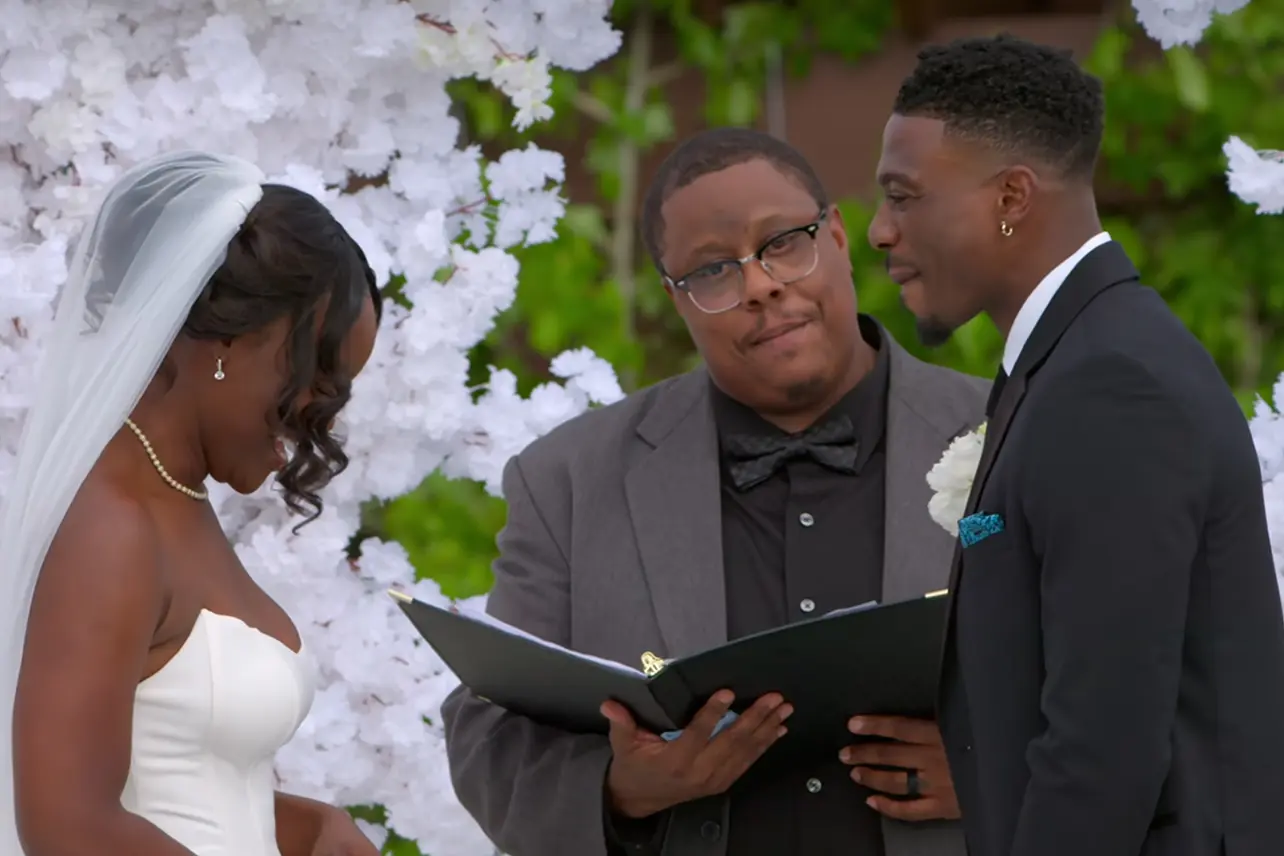In an era where reality TV seeks to push the envelope, “Love Is Blind” has carved its niche by testing the waters of love and commitment in the most unconventional way. And while the early seasons produced some of America’s most coveted love stories, the more recent runs have showcased a sprinkle of chaotic cast members, who, despite the show’s premise, appear to have marriage on the bottom rung of their ladder of priorities.
What Is “Love Is Blind”?
For those who aren’t familiar, “Love Is Blind” is a dating reality show that starts with a number of singles dating in isolated “pods” where they can talk to but not, see each other. The goal is to build connections beyond physical looks. Couples who form a strong bond within the set 10-day period can get engaged sight unseen. After the engagement, they meet in person, merge their lives, and prepare for a quick wedding. The climax is the wedding day, where they choose to say I DO or I DO NOT, proving whether or not their love was truly blind.
There is no denying how intriguing it is to watch random couples fall in love unconventionally on TV. For many viewers at home, the show presents a swoon-worthy opportunity to live or relive romantic experiences through the lens of the cast. However, beneath the surface of this entertainment value lies a troubling practice: the involvement of children in experimental weddings. This mom argues it’s time for a change.
A Traumatic Experience for Little Children
“When I watched Clay and AD’s wedding ceremony televised on Season 6, Episode 12 of “Love Is Blind,” I was completely shocked to see such a distressing event unfold in the presence of those two little girls,” says Miracle Iloani, a mom of 3, Lecturer and a Sonographer at the NHS (@miracles__home on Instagram). I had a major concern for the two little girls who had to watch AD get heartbroken and consistently question why she wasn’t enough. It was very painful to watch”.
Experiencing rejection at the altar is deeply traumatic for adults, but introducing children to this scenario is far more problematic because their impressionable young minds, still forming their views on love and commitment, are now forced to endure unnecessary trauma. Children involved in these televised weddings may begin to associate the concept of marriage with uncertainty, pain, and heartbreak. “They are exposed very early to the idea that even after investing time, money, and resources into a wedding, there is still a significant chance of being left at the altar, devastated and alone. This can lead to a distorted view of relationships and a fear of commitment later in life,” adds Miracle.
Childhood Trauma Is Proven To Have a Lasting Impact on Adults
In reality, this mom is not wrong. In a study published by The National Library of Medicine, childhood trauma experiences were found to have a detrimental effect on depression and anxiety behavior in adults. Additionally, Psychology Today reports that: “Adult survivors of complex childhood trauma can struggle with processing what they survived, which can lead to emotional and physical symptoms.”
“As a mom to girls myself, I was deeply troubled by what unfolded on my screen during AD and Clay’s wedding on “Love Is Blind,” adds Miracle, who believes that marriage, despite the uncertainty of the future, is a sacred commitment that should not be taken lightly. The essence of marriage ceremonies—a celebration of a lifelong bond between two individuals who choose each other—is sometimes lost in the show’s spectacle. It’s this shift from sacredness to spectacle that worries Miracle, especially considering the potential emotional fallout for children watching.
The question of impact is critical here. “Adults can contextualize the show’s drama and identify that there was also an uplifting show of encouragement and support from AD’s loved ones. Children, however, lack the maturity to navigate these emotional complexities,” she says. The scenes of distress and uncertainty they witness risk leaving a lasting imprint, possibly shaping how they perceive trust and relationships as they grow — And we’ve seen firsthand how profound these childhood traumas can be—Clay’s story was a poignant example.
A Call To Action
Miracle’s insights underscore a vital conversation about what we broadcast, emphasizing the need for careful consideration and sensitivity toward reality TV cast and viewers.
“The show “Love Is Blind” brands itself as an experiment, one that plays out in the real lives of its participants. But at what cost?” asks Miracle. Weddings on “Love Is Blind,” marked by uncertainty and, sometimes, pain, are no place for kids.
“To protect the well-being of children, it is essential that “Love is Blind” reevaluates the decision to allow them to attend these televised weddings. If they must be present, their age should be carefully considered, and measures should be implemented to minimize their exposure to emotional turmoil,” she concludes.
As a society, we have a responsibility. This call to action goes beyond altering a TV show format. It is time for the producers of “Love is Blind” to reassess their policies and prioritize the mental health of the kids involved in their experiment. As reality TV continues to evolve, key players must not forget their duty to participants and viewers alike, especially the most vulnerable among us.
